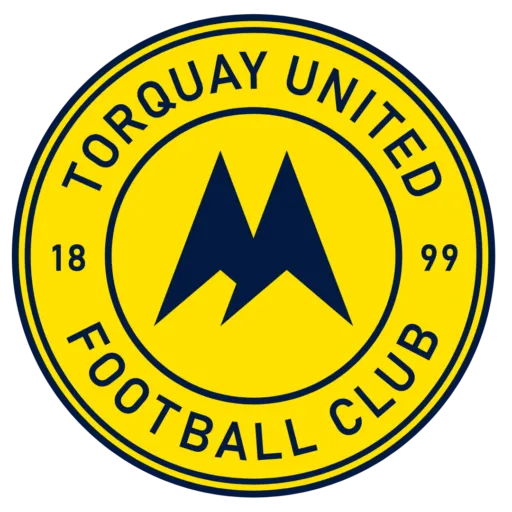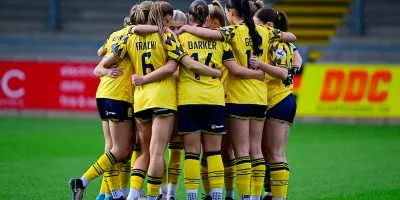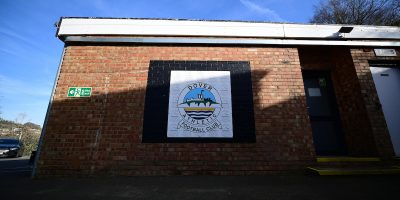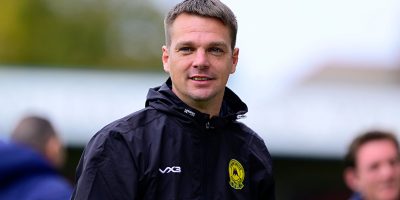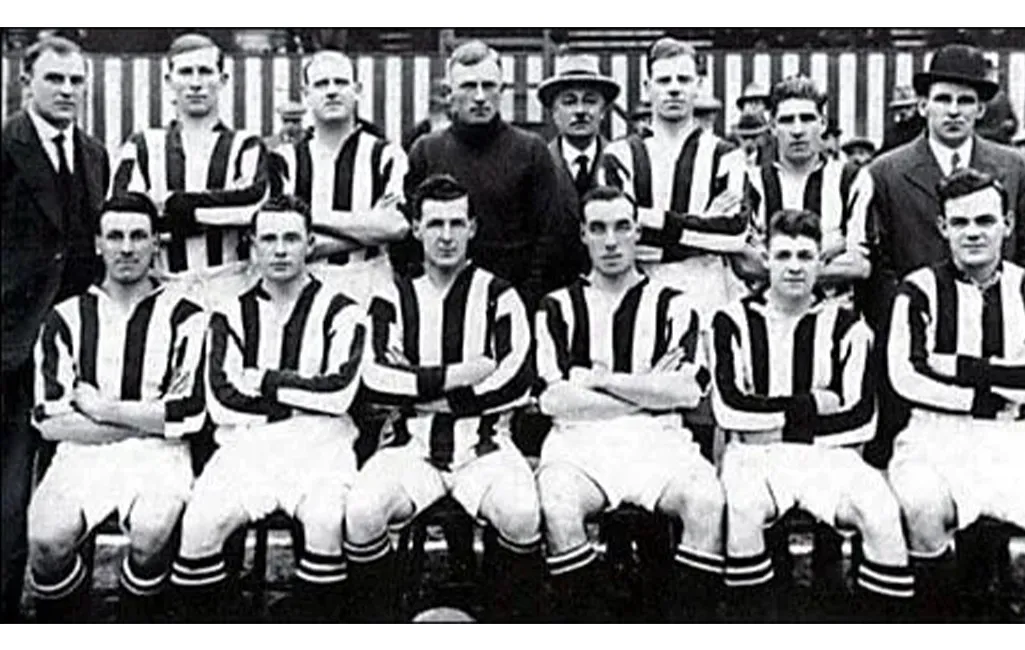
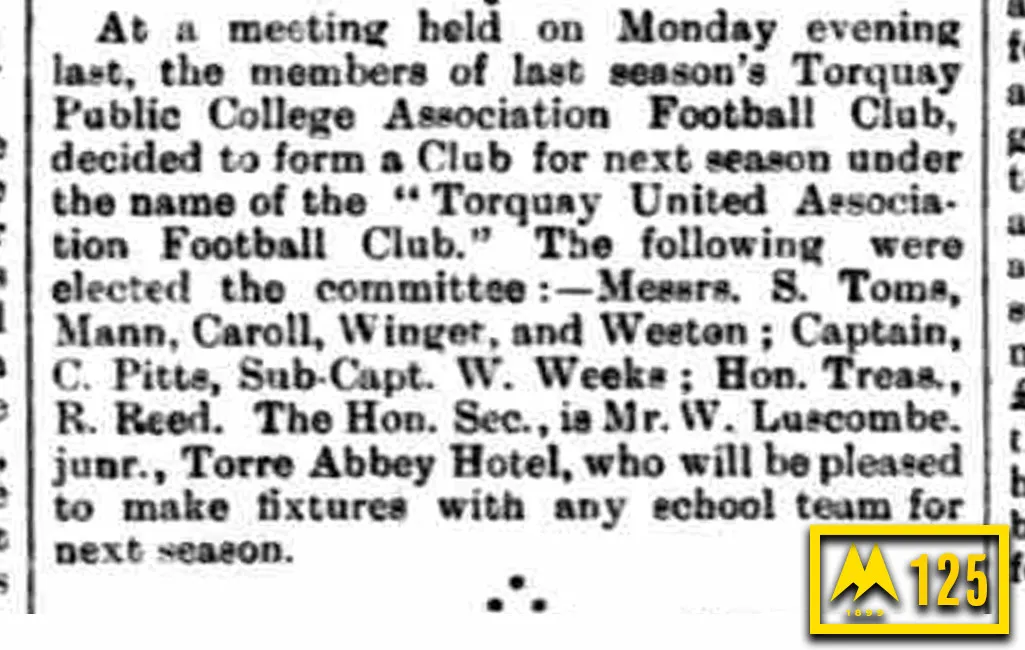
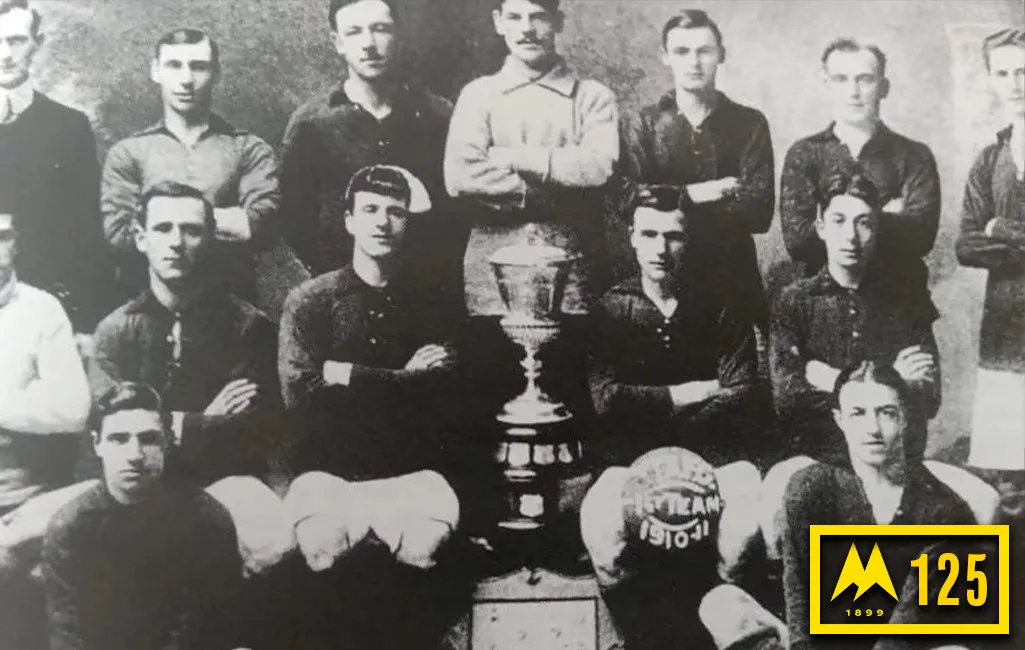
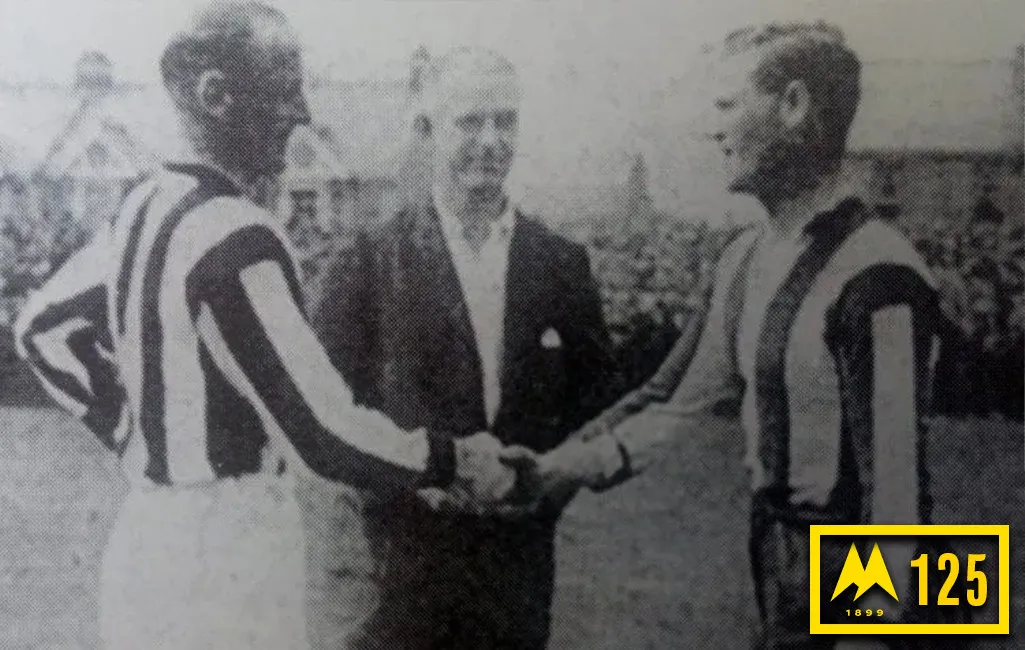
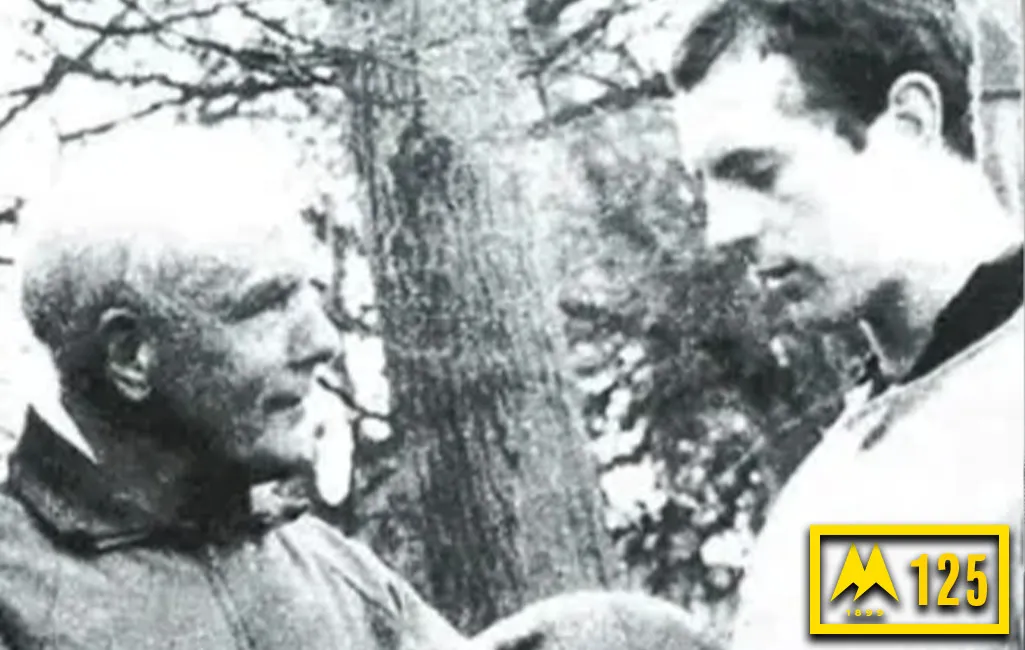
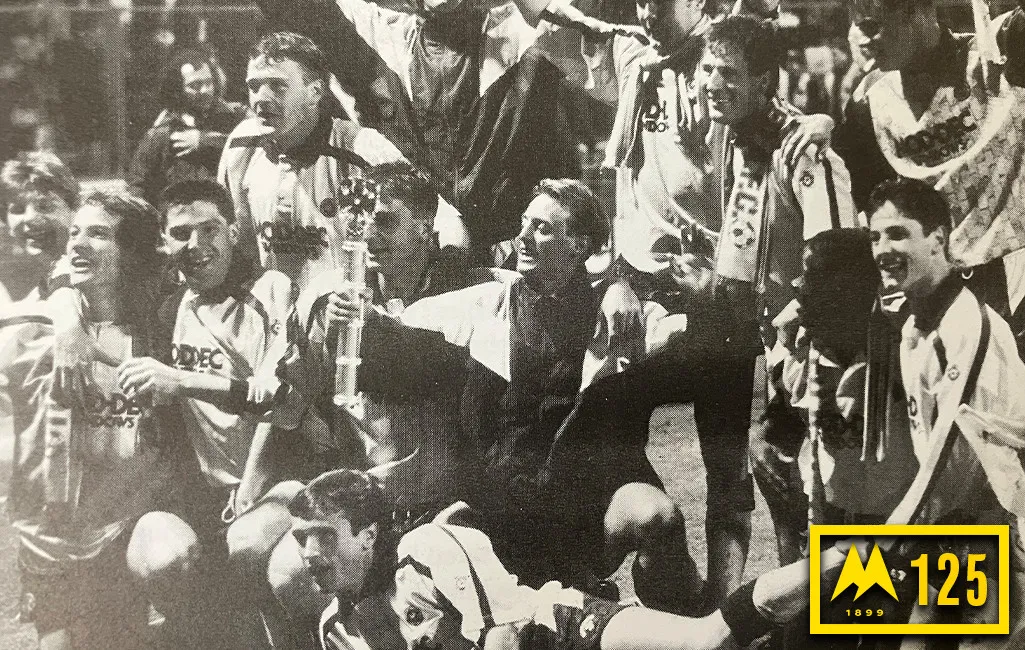
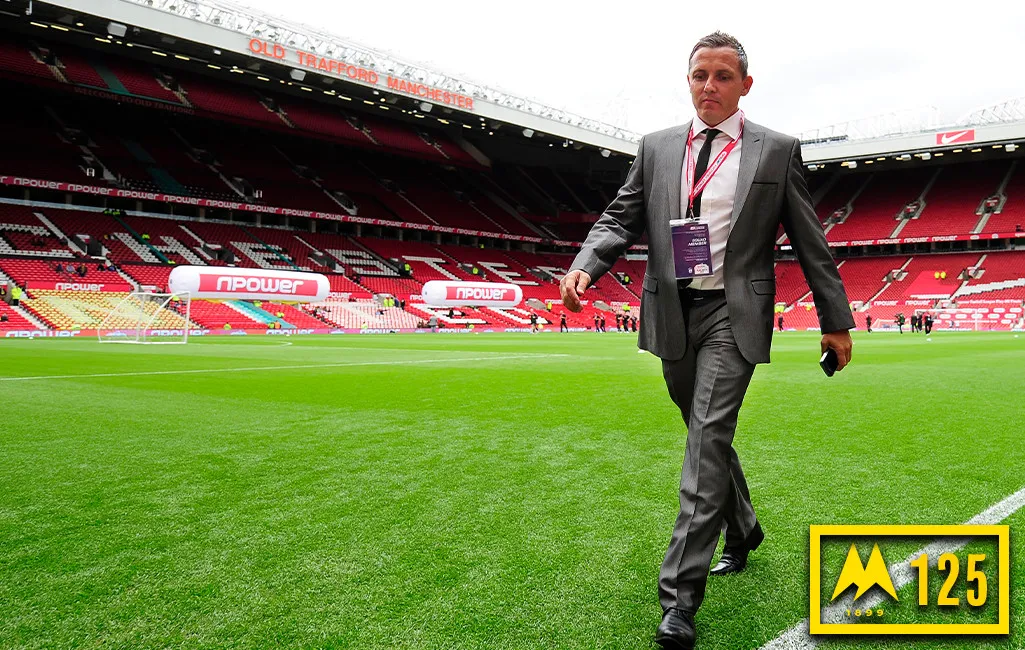
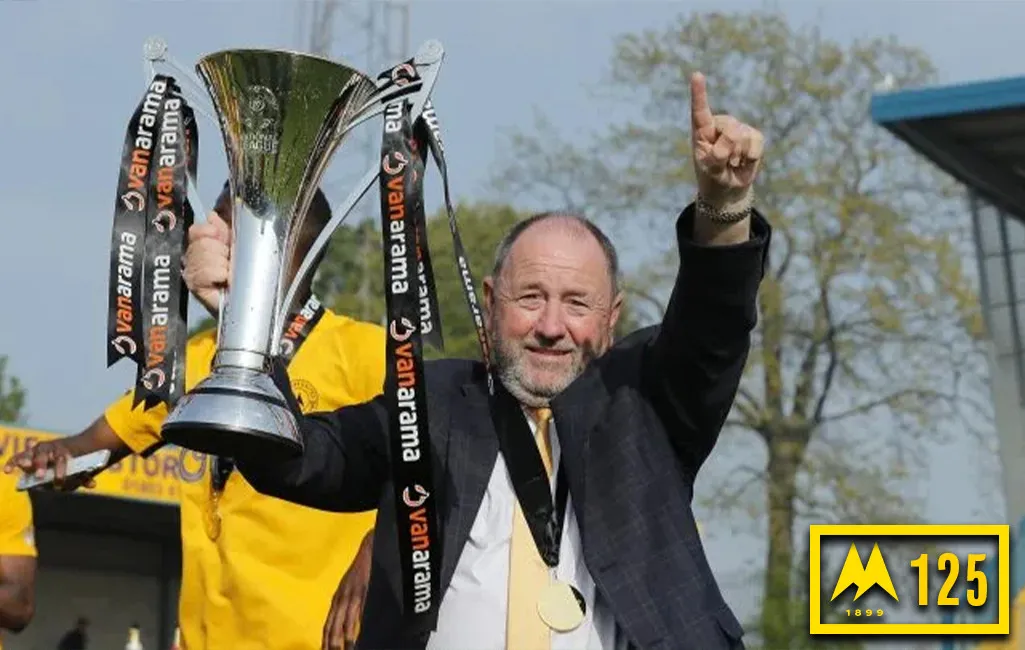
On Monday 1st May 1899, Torquay United Football Club was born.
It was the local rag of the day – the long-gone ‘Torquay Times and South Devon Advertiser’ that broke the news of United’s formation to an inquisitive public, with the announcement occupying a paragraph of the Sports & Pastimes columns of the edition dated Friday, 5th May 1899.
The news of TUFC’s formation didn’t initially set many pulses racing, with the rugby code being received far more keenly throughout Devon. The first public ‘soccer’ match had only taken place some eleven years previously, and therefore the fledgling club certainly had their work cut out grabbing many headlines over the next few years.
The pupils of Torquay Public College wouldn’t be dissuaded however, and so, during the summer that followed, preparations were made ahead of the club’s first planned fixtures in September.
Starting Out
The first priority was finding a ground to play on. Mr John Wright’s field in Teignmouth Road was rented for the sum of £5, under the proviso that home fixtures were completed in March as the field was required for grazing purposes. With the season ending in April, this meant the new club were compelled to play away games during the final month.
United’s first ground, was in fact, little more than three acres of undeveloped fields. The only facility on site was a storage hut, meaning that in the absence of changing rooms, the teams would usually get changed into their kit at the Clarence Hotel, quite some distance away.
Finding opponents was a challenge in itself, with many potential teams favouring the completion of the cricket season. Opponents were found though, and, although there have been conflicting reports through the years, most sources suggest that on the 16th September 1899 the club played the first match in its history with a friendly against their co-tenants at Teignmouth Road, Upton Cricket Club.
That inaugural match ended in success with a 5-0 victory, courtesy of a hat-trick from Pitts, followed by strikes from Upham and Wicks. That win set the tone for Torquay United’s first season, which was made up purely of friendlies. It should be noted, however, that most sides represented school teams and ‘scratch sides’. This was perhaps best illustrated with an 11-1 win over Torquay Nomads and a 9-0 win over Torbay College Past & Present.
Support for the fledgling club steadily grew, and by the end of their first season, attendances had grown towards three figures. United responded by applying for a place in the East Devon League for 1900/01, and once accepted, the decision was soon made relocate to a more suitable ground.
The Recreation Ground, now home to Torquay Athletic RFC, was initially quite a step-up for United – grandstand et al – however having become the property of the town, and after providing significant funding towards its renovation, the site was now attracting interest from sporting rivals throughout the town, in particular, Athletic.
The Rugby Club had long been established in the town, and were in a much better financial position to afford the annual rent set by the Town Council. It was therefore no real surprise when they were duly awarded the tenancy at United’s expense. Whilst the Recreation Ground remains Athletic’s home to this day, Torquay United were on the move once again.
Homeless, they once again turned to their old friend, farmer John Wright, who offered the club use of two fields. Although grateful to have a place to go home again, neither met league standards, and therefore the club we forced to withdraw from the league until a more suitable ground could be located.
With all the uncertainty regarding their ground status, and no league to play in, two other clubs began to challenge United’s status as the town’s premier side. Ellacombe and Babbacombe were both vying for supremacy in the new Torquay & District League, and it was during this time that the Torquay public first started to question whether an amalgamation of three clubs may prove to be the best way forward.
After brief spells playing friendlies in and around Cricketfield Road, United rejoined the East Devon League in their latest home at Torquay Cricket Club. Although far from perfect, the facilities provided by the cricket ground did at least mean the club could again look forward to competitive fixtures, until the league itself folded in November 1907. Desperate not for a return to exhibition fixtures, the club’s First Team replaced their own Reserve side in the Torquay & District League, but with Babbacombe and Ellacombe both plying their trades further up the league ladder, United were now in the embarrassing situation of competing with their respective second XI sides.
United did restore some pride the following season though, by securing the 1908/09 Torquay & District League title, having scored an astonishing 86 goals in just 14 matches, with just one defeat. It was clear by now though, that Torquay United no longer represented the senior team in the town, and with Exeter City joining Devon counterparts Plymouth Argyle by turning professional in 1908, talks intensified regarding the amalgamation of the trio – United, Ellacombe and Babbacombe.
Whilst it was widely regarded that all three were decent local sides in their own rights, none were deemed capable of fulfilling professional ambitions alone.
In 1910, two of the town’s sides, United and Ellacombe finally agreed to merge. Ellacombe, who had taken over use of the Plainmoor ground vacated by Torquay Athletic, enlisted the help of their President and local Vicar, The Reverend Percy Baker, to help secure the ground for the new side, which would go under the name of Torquay Town. Although Babbacombe refused to join forces with their rivals, they agreed to a ground share arrangement, and with both sides competing in the Plymouth & District League, it made for competitive relations between the sides.
Town’s decision to merge proved a wise one from the outset. In their first season they enjoyed a fine FA Cup run, which included wins over Green Waves (Plymouth), Branscome Gasworks, Boscombe and Oxford City, before they bowed out at the 5th Qualifying Round at the hands of Accrington Stanley. In addition to this, they became the first side from outside Plymouth to lift the Devon Senior Cup, whilst their 5th-placed finish was in stark contrast to that of Babbacombe, who finished one place off the foot of the table.
The following season proved even more successful for Town, as they secured the Plymouth & District league title. Babbacombe’s struggles continued though, as they finished bottom of the pile, with just 6 points from 30 games.
Relations between the two sides were becoming increasingly strained. In the 1912/13 season, both sides were forced to withdraw from the County Cup, with neither side able to agree terms for their 1st Round tie. By the time football ceased due to the outbreak of the Great War, it was Town who claimed absolute bragging rights, having won all eight league encounters since their formation.
Tragically, a number of the town’s first football stars lost their lives during the war, whilst others who were fortunate enough to survive the conflict lost the best part of their careers due to injuries sustained in battle.
Merge Sees Club Thrive
After hostilities finally came to an end in 1918, the resumption of football after carried on much as before, however following the elevation of Exeter City and Plymouth Argyle to Southern League level, discussions regarding a merge between Town and Babbacombe gained further traction, before in 1921, Babbacombe relented to form the new, professional, Torquay United that we still know today.
Immediately joining the Western League, the side secured a credible sixth-place finish in that first season, whilst three years later, Torquay reached the first round proper of the FA Cup, only losing out to Reading after two replays.
The crowning glory though, came in 1927, when 28 years of dreams finally paved the way for the reality that Torquay United were a Football League club, and after being crowned as champions of the Western League, the club successfully applied for full membership to the Football League.
United’s first game was a 1-1 draw with Exeter at Plainmoor, with Bert Turner gaining the accolade of scoring Torquay’s first goal, via the penalty spot.
A point wasn’t a bad showing on Day 1, but it was hard work from there.
Then known as the Magpies, that opening day point was swiftly followed by a painful 9-1 defeat at Millwall, and that was to be a sign of things to come, as the League’s new boys ended their first league campaign bottom of Division Three (South).
Fortunately, re-election to the league was immediately confirmed and the 1930s was a decade of quiet consolidation, with the club never finishing higher than tenth place.
When the Football League resumed after World War II, United found a goalscoring hero in the form of Sammy Collins, who helped his team finally break the top-ten duck in 1949. Collins would go on to become the club’s record scorer with 219 goals from 379 games.
The famous Yellow and Blue shirts, reflecting the golden sandy beaches and clear blue sky of the Riviera’s best days, made their bow in the 1954-55 season. The new-look kit played its role in a fabulous run to the fourth round of the FA Cup, when, after humbling the mighty Leeds United 4-0 at home in a replay after a 2-2 draw at Elland Road, a record 21,908 crammed into Plainmoor for a narrow loss to Huddersfield, with the attendance remaining Plainmoor’s highest-ever, to this day.
The era of manager Eric Webber saw United come within goal difference of winning promotion to Division Two for the first time ever, until Webber’s side were pipped by Alf Ramsay’s Ipswich Town on the final day of the 1956-57 season.
Success though, would eventually come The Gulls’ way.
A change to the league structure and abolition of the regionalised system placed United in the newly-formed Division Four and the date of April 27, 1960 would finally see the club win promotion from the bottom league.
Players like Don Mills and the Northcott brothers of Tommy and George were then the fans favourites of the day, with United comfortable in their first season in Division Three, before dropping back down the following year.
The emergence of young goalscorer Robin Stubbs kept the side near the top of Division Four however, and 1965, Torquay United enjoyed one of its most famous days, as Bill Nicholson’s mighty Tottenham Hotspur arrived at Plainmoor to contest the third round of the FA Cup. Just over 20,000 people witnessed a stunning 3-3 draw, courtesy of a brace from Stubbs. Although the replay at White Hart Lane was a heavy loss, the episode was a fitting end to 15 years of Webber management.
Frank O’Farrell swept in as his replacement and guided the Gulls back to Division Three in 1966 (a particularly famous year, by all accounts), as The Gulls again went close to making into into the second tier, before being denied a place in Division Two by a poor finish to the 1967-68 season. Relegation back to Division Four beckoned in 1972, and it would be 19 years before the club graced the third tier again.
The 1970s was something of a non-event, but Bruce Rioch’s arrival as boss coincided with another run to the fourth round of the FA Cup in the 1980s, where his side lost out in a 3-2 thriller with Sheffield Wednesday.
Many long-serving (or suffering) supporters see 1985 as rock-bottom, as crowds and local interest dwindled, and Torquay suffered the ignominy of finishing at the foot of Division Four for the first time in 57 years. That campaign of misery was immediately followed by another two disastrous seasons, with United somewhat fortunate to survive – first via the dubious re-election method, and then by something even more bizarre.
The introduction of a relegation system to the Conference was obviously a concern in the 1986-87 season and The Gulls only escaped the drop by holding Crewe to a 2-2 draw on the final day.
In a match that was held up by defender Jim McNichol being bitten by a police dog named Bryn, it would be top-scorer and Paul Dobson would go on to equalise for The Gulls in the time subsequently added on.
Unsurprisingly, it’s gone down in Plainmoor folklore. There’s even a beer in the Club’s bars named in his honour.
Wembley & Woes
Cyril Knowles assumed the reigns for the following season and steered United to the newly-created play-offs, however there was heartbreak this time, as his combative and entertaining side lost out to Swansea 5-4 on aggregate. Among those helping the Gulls to battle away at the right end of the table was teenage winger Lee Sharpe, who was sold to Manchester United at the end of the campaign.
The Sherpa Van Trophy in 1989/90 would bring a sense of the big-time a year later, with the competition’s later stages that season seeing former Wolves striker Dean Edwards scoring twice over a two-legged semi-final against his hometown club, to take United United to Wembley, and although Edwards repeated the trick in the final, Bolton were too strong in the Final.
Two years later though, disappointment would be replaced by delight under the Twin Towers.
A wonderful start to the 1990-91 season took The Gulls clear at the top, before Christmas but a lull in form saw John Impey introduced as manager in place of Dave Smith. A finish of 7th booked United their place in the play-offs, and Burnley were duly defeated in the semi-final.
Wembley once again beckoned, where Blackpool were the opposition on a Friday night under the lights at the national stadium.
Wembley-specialist Edwards and Wes Saunders scored in a 2-2 draw, and with the sides unable to be separated, it was left for penalty kicks to decide the final promotion place to Division Four.
Torquay goalkeeper Gareth Howells would score in the penalty shoot-out (a first), before Dave Bamber missed for the Tangerines to seal promotion via penalty kicks (another first) for Impey’s men.
No sooner had United escaped the bottom division, they were back in it again, with a managerial merry-go-round resulting in Neil Warnock briefly taking charge to rescue the plummeting Gulls from a double-relegation out of the Football League.
Unfortunately, the pattern was set and United finished bottom in 1996, only escaping relegation because Conference Champions Stevenage Borough failed to meet League ground regulations.
The Kevin Hodges-era saw the club briefly looking up, rather than down again, with a run of eight straight wins – prior to a late stutter – seeing them go within a goalpost of automatic promotion, as a 2-1 defeat at Leyton Orient proving costly. Another play-off campaign beckoned, but Colchester triumphed at Wembley to deny them once more.
ex-promotion winning captain Saunders returned as boss and certainly boosted the financial coffers, selling star striker Rodney Jack for £650,000, whilst on the pitch, his side just missed out on the play-offs during an entertaining second term, before a dip in form led to Colin Lee taking over.
The struggle continued, however, with only a desperate last-day win at Barnet saving the side from relegation.
Next into the hot-seat was Leroy Rosenior – a man who would earn legendary status after he guided his talented young side to promotion in a thrilling 2003-04 season.
Sadly, the return to English football’s third tier was brief, and after only just escaping back-to-back relegations, TUFC failed to heed the warning sufficiently, as they were relegated to non-League football after 80 proud years.
A major revamp behind the scenes rescued the club from the brink of extinction though, and a new consortium containing lottery winner Paul Bristow helped to stabilise a financial crisis at Plainmoor, with former midfielder Paul Buckle named as boss.
On the pitch, the Gulls were left disappointed at Wembley again, this time losing the FA Trophy Final to Ebbsfleet. The pain was heightened by a play-off semi-final loss to bitter rivals Exeter City, but the following year was one to savour.
Buckle steered his charges to the fourth round of the FA Cup and a play-off final win over Cambridge, with the jubilant celebrations acclaiming that the Yellows were back in the Football League in double-quick time!
A season of consolidation was followed by two thrilling promotion-chasing campaigns.
The final year under Buckle ended with United reaching the League 2 play-off final at Old Trafford but Stevenage emerged as single-goal winners, and to make matters worse, United lost their boss – and several players to Bristol Rovers soon after.
However, the 2011-12 season, the first under Martin Ling, saw the new manager brilliantly rebuilt his squad, with them only missing automatic promotion on the final day, before losing to Cheltenham in the play-offs.
Sadly, Martin Ling fell ill midway through last season and Alan Knill took over on a temporary basis, steering the Gulls away from relegation on the final day of a traumatic campaign. The club then parted company with Ling and installed Knill as permanent boss. The Knill-era though proved unsuccessful in the main, and after finding themselves deep in relegation trouble despite a whole host of new signings, the new year of 2014 saw a returning hero take charge in Chris Hargreaves.
Despite some promise, the mountain was too much to climb, and United suffered relegation to the Conference only five years after escaping it.
Into The Present…
This time, things wouldn’t prove quite so straightforward upon their return to the fifth tier.
Having finished the 2014/15 campaign in mid-table, ex-Eastwood and Mansfield manager Paul Cox was put in charge of first team duties with a reduced playing budget for the coming season.
United started the season with a 1-0 win over Macclesfield, but further wins were hard to come by and Cox resigned from his post in September 2015.
The Board of Directors appointed former player Kevin Nicholson to turn the season around and save the club from relegation.
At one point United were twelve points from safety but with the addition of some canny signings, Nicholson and his squad were able to avoid relegation from the National League. with ‘The Great Escape’ celebrated in the shape of a 2-0 win away to Bromley.
The next season proved to be equally as difficult as the team found it difficult to turn the results their way on a consistent basis. Many games were lost by just one goal, but just like the season before, Nicholson and his coaching team were able to turn the season around just in time to stay in the National League again.
The summer of 2016/17 was a season of change at the Club, as after three defeats in the first four games, Nicholson and the Club parted ways, before Bath City manager Gary Owers took charge in September 2017.
Despite strengthening United’s squad with a number of signings, Owers was unable to lift United out of the relegation places, and despite a brief upturn in results and performances, United’s fate was sealed following a 1-1 draw away to Hartlepool, as the club was relegated to National League South.
United’s board and management insisted that their stay in the sixth tier would be a brief one, and Owers was immediately given the funds to put together a side capable of bouncing back at the first attempt.
Eleven new faces were named in the Gulls squad that opened up with a 0-0 draw against Chelmsford, and this was followed up with successive wins over Bath City and Hemel Hempstead. However, one win in the next six games, culminating in a 1-0 home defeat by Chippenham, signalled the departure of Owers, and within 24 hours, former Yeovil Town and Bristol City manager Gary Johnson was announced as his replacement.
A season-long battle for National League South ensued before Johnson’s men eventually ran out clear winners, following a remarkable upturn in form since his arrival. It was quite the entrance from Johnson, and it so nearly was followed up by even more success.
Two years later, despite playing almost the entirety of the 2020/21 campaign behind closed doors, Johnson’s men went agonisingly close to securing a return to the Football League with a 2nd-placed-finish, before a memorable 4-2 Play-Off Semi-Final over Notts County at a raucous Plainmoor set the stage for a Promotion Final against Hartlepool United at Ashton Gate.
Once again, The Gulls’ never-say-die spirit was on full display in front of a national TV audience, as goalkeeper Lucas Covolan’s last-gasp header sealed a 1-1 draw, to send the match into extra time. Sadly, penalty kicks would eventually deny United of the victory many felt they deserved.
The Yellow Army could then only watch on, as rather than seeing their side take the last step towards an EFL return, things went in the opposite direction.
Despite bringing in a number of talented and promising young loan signings, Johnson’s side could only manage a mid-table finish the following season, before United suffered a return to sixth-tier football once more, after a difficult 2022/23.
Although inconsistent at times, the first half of 2023/24 seemed to bode well, with The Gulls’ last-gasp 3-2 win over Hemel Hempstead in their last home game before Christmas seeing them going second in the table, with a few nervy looks over the shoulders from leaders Yeovil, to boot
Come the end of the campaign though, Torquay United’s very existence was under threat.
After Johnson’s departure, Interim Manager Aaron Downes steadied the ship, but after The Gulls were forced into Administration and subsequently deducted a total of eleven points, the Southern League – or no club at all – looked a distinct possibility at times during the closing weeks.
A memorable 2-1 win at relegation rivals Taunton eventually secured their status in the division with a game to spare.
